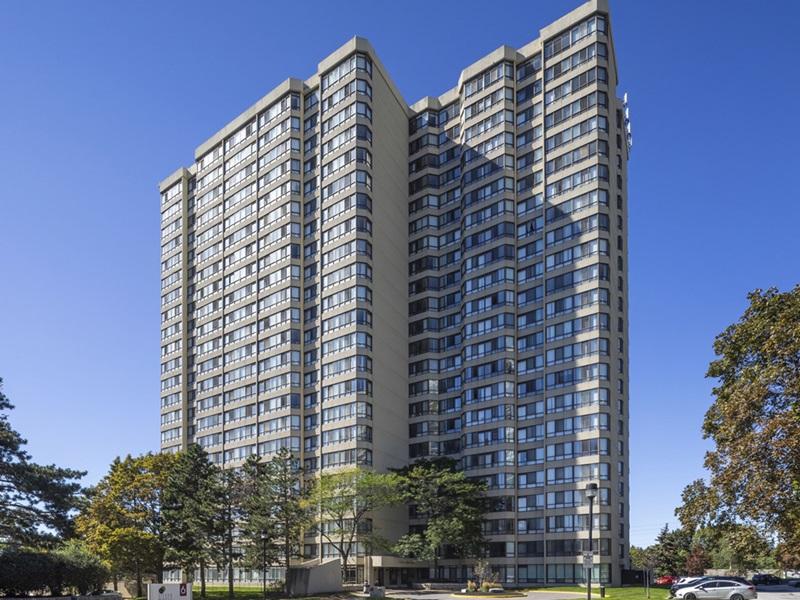
Oxford Properties plans 3.3 million square feet of industrial development at the Milton James Snow Business Park. (Courtesy Oxford)
Oxford Properties has broken ground on the $825-million James Snow Business Park in the Greater Toronto Area town of Milton, where it plans to build a highly sustainable logistics hub of up to 3.3 million square feet.
The master-planned project is planned to contain 14 buildings and will be developed in phases at the 180-acre site. The initial phase now under construction comprises four buildings and about 1.55 million square feet of space, and is being built on spec.
Oxford has developed other industrial projects of this scale, but the firm’s head of industrial for North America, Jeff Miller, told RENX this is its first in the GTA.
“It’s very exciting. We’ve done a bunch of these across Canada and in the U.S. through our U.S. companies, so we are pretty excited to kick off a master-planned park in the Toronto area,” Miller said. “As we know it’s going to satisfy a huge need on the supply side; there really is a massive lack of real estate infrastructure right now.
“Toronto has got the lowest vacancy rate of major markets in North America . . . I think GTA just hit 0.3 per cent, not availability but just vacant. It is flat out nothing available.”
James Snow Business Park’s scale, flexibility
He said the scale of the James Snow Business Park also increases the flexibility of the types of product it can deliver for prospective tenants.
This phase, for example, includes state-of-the-art buildings ranging from about 75,000 square feet (two buildings) through 300,000 square feet and up to a million square feet of leasable space.
“We almost view these master-planned parks like an ecosystem where we can accommodate all kinds of different sizes and different types of industry and business for employers,” he explained.
“Over time they kind of interweave and work with each other, is the intent, if we have (unit) sizes from 15,000 square feet to over a million.
“To be able to create this product but to do it in a sustainable way is so important for us and increasingly important for our customers as well.”
Oxford builds in sustainability features
On the sustainability front, Oxford is incorporating solar power systems into the design of a spec project for the first time.
The four buildings include 400,000 square feet of solar photovoltaic arrays to provide 3.8 million kWh of renewable energy annually.
The James Snow park will target LEED certification and includes what Oxford calls “substantial work to preserve, restore and enhance the local natural heritage system.”
The design was created in collaboration with Denmark’s ak83 architects and local firm Glenn Piotrowski Architect.
“Advancing the sustainability initiative in industrial is a key priority for Oxford. We have historically on the construction side achieved LEED – it’s kind of the price of admission almost, where we are going to get base LEED environmental certification.
“The real question is how do you get beyond that. How do you install solar? Can we move to net-zero for industrial? So it’s been super important for us to incorporate this across the park.
“We are now going to incorporate the solar as part of the base building infrastructure no different than the dock equipment, the lights and the roof. It is going to be part of the use building so our tenants will have clean energy from Day One.”
Two years of site preparation work
Oxford acquired the property about four years ago as a greenfield site in an area which was already designated by the town for future growth.
It’s part of the Derry Green Secondary Plan, Miller said, and Oxford then worked to take it through the various approvals and entitlements.
For the past two years, a massive amount of site work and preparation has been underway.
“We’ve had two years of infrastructure where we’ve had to build two roads, the pond, the greenspace,” Miller said. “We’ve imported a million cubic metres of fill, a hundred thousand truckloads of fill.”
The decision to move ahead on spec reflects the extended period of tight industrial availability across the GTA – currently well below one per cent – and what Oxford is hearing from its own existing tenants across the region.
Essentially, there is a strong belief demand will continue.
“We own eight million square feet in this market (essentially the Metro West submarket) and we know through our existing customer base the inherent demand that’s there,” Miller said, noting inquiries from prospective tenants generally start once a building is actually being raised.
“We definitely have a strong belief that it’s there, and it’s going to continue to be there. And, it could actually be from our own portfolio.”
Tailwinds for light industrial sector
Despite some pullback in the e-commerce sector by companies such as Amazon (though much of that has been focused in the U.S.), Miller said there are many components to the light industrial boom.
“One of the things about industrial that I still believe in is just the huge variety and the breadth of companies that occupy facilities around an 800-million-square-foot market,” he said.
“There literally is every type of business under those roofs.”
Global instability and supply chain issues continue to be a factor as well. He said third-party logistics companies, needs- and tech-based firms and other light manufacturers are continuing to expand and consider on-shoring more of their operations.
Milton itself has seen a flurry of industrial land trades and development starts over the past year or two as demand has spilled over from the urban core areas.
Miller said there are several reasons for this.
“I’d say a combination of a couple of things. First of all it’s availability of land and it’s also the proximity to one of the largest markets in North America.
“It is really part of the fabric of industrial logistics,” he observed, noting that in the U.S., emerging light industrial hubs “can be an hour outside of the core. Milton is five minutes away. It’s not out there by any means.”
Oxford plans to deliver the four Phase 1 buildings during the latter part of 2023. At that point, Miller said, decisions will be made about the second phase.











